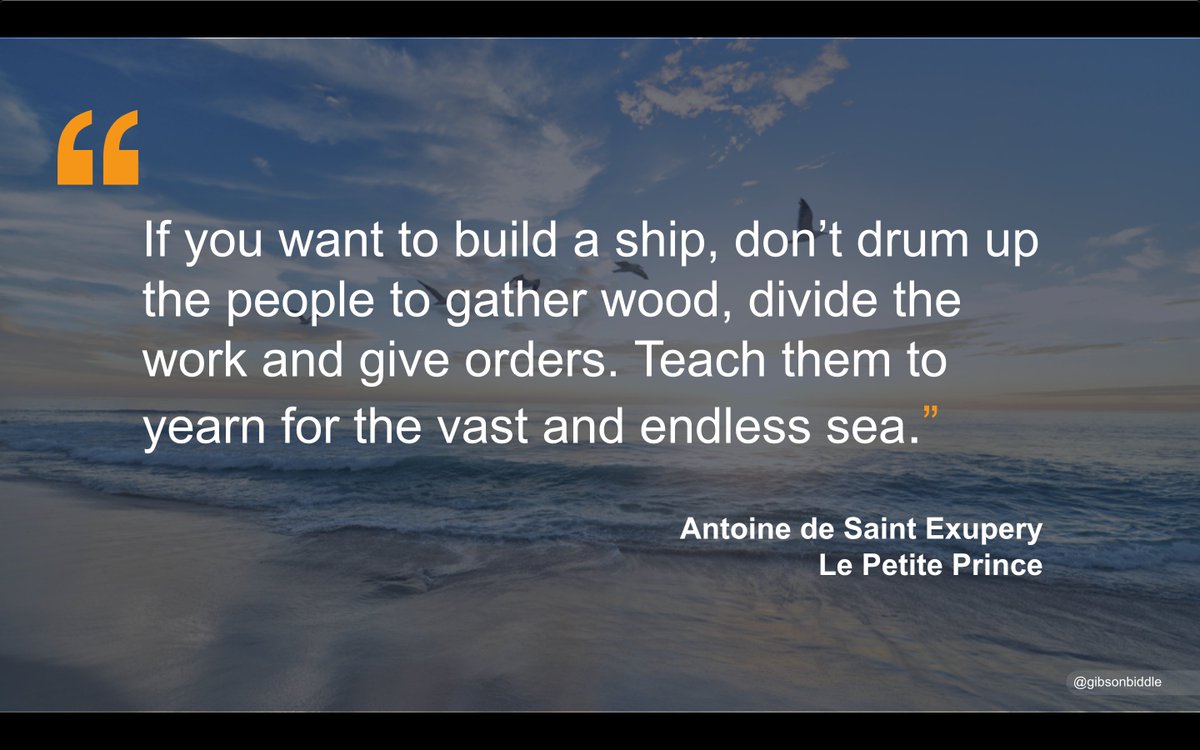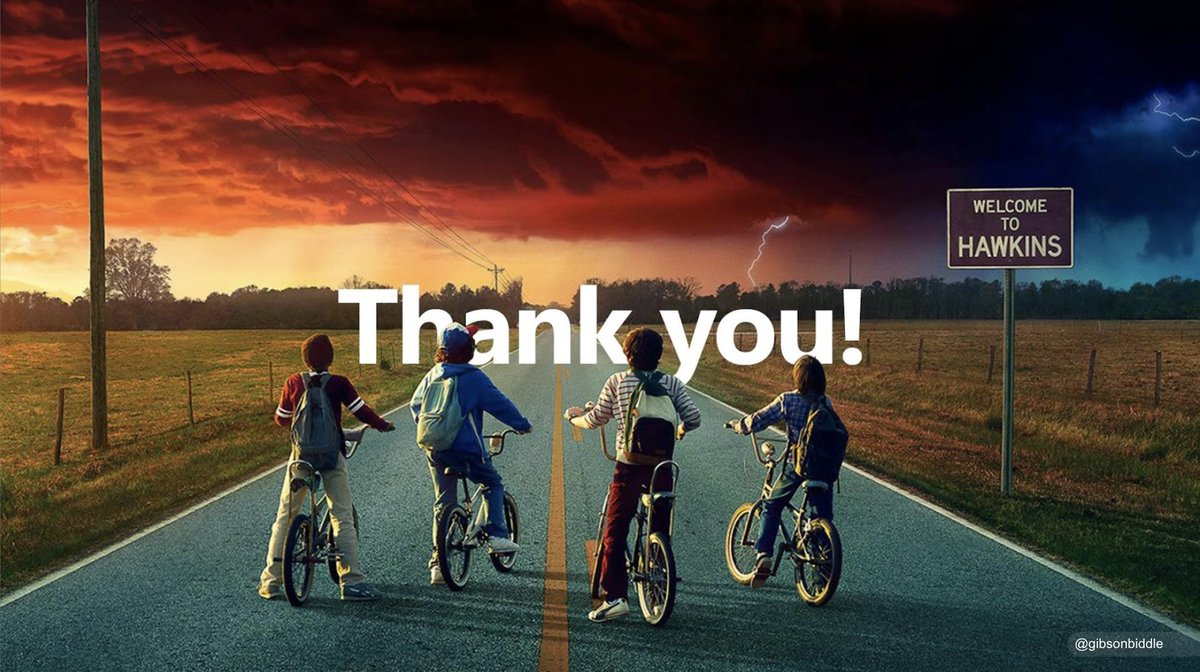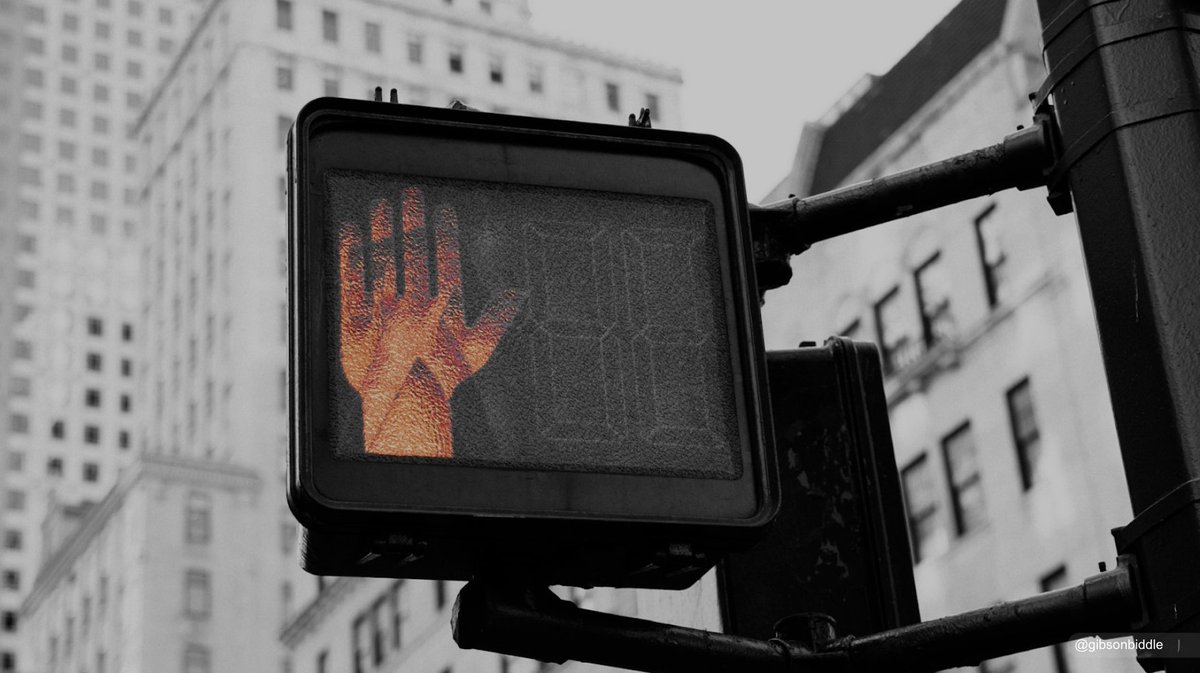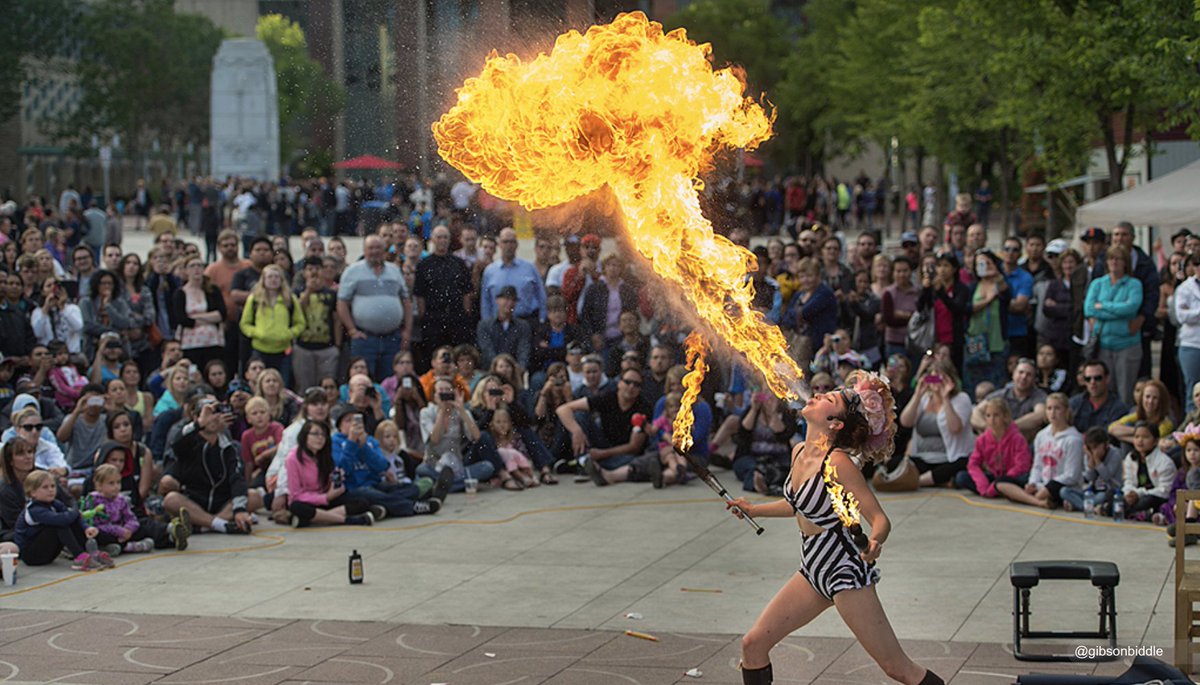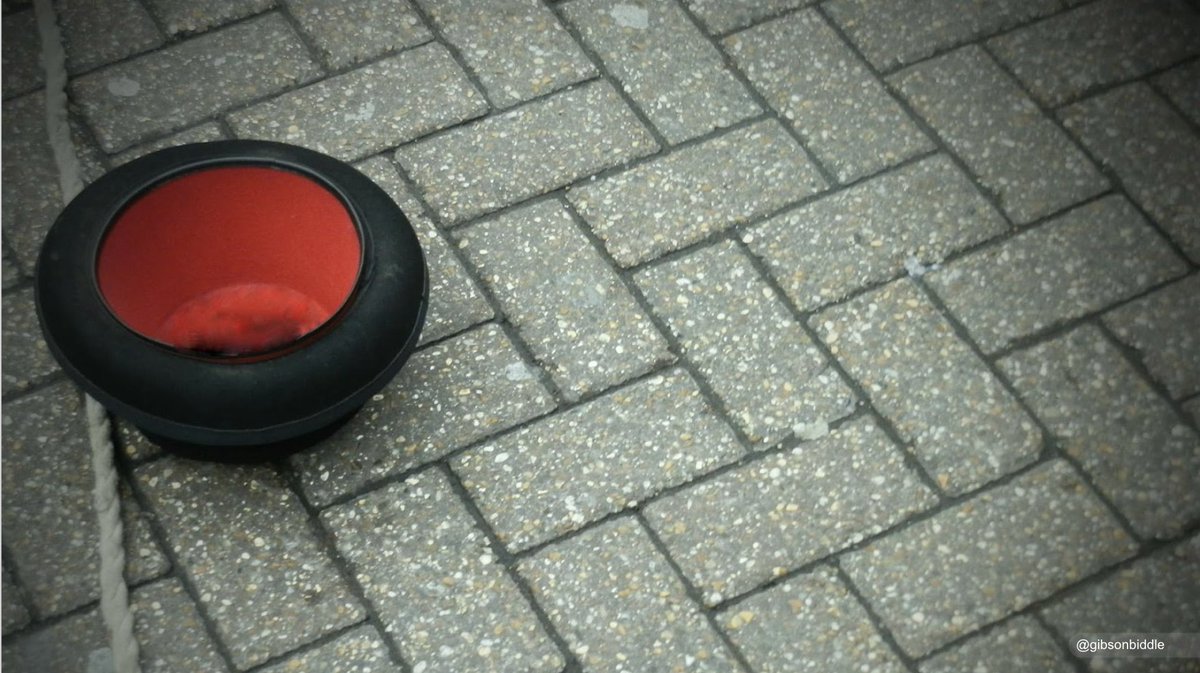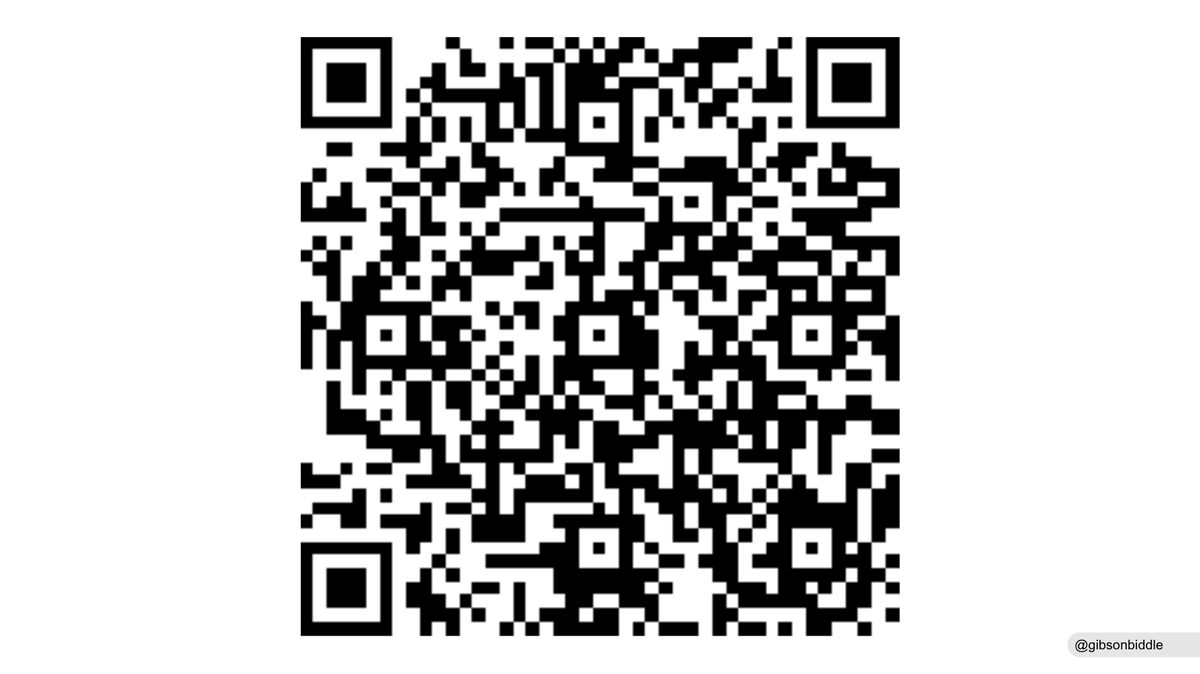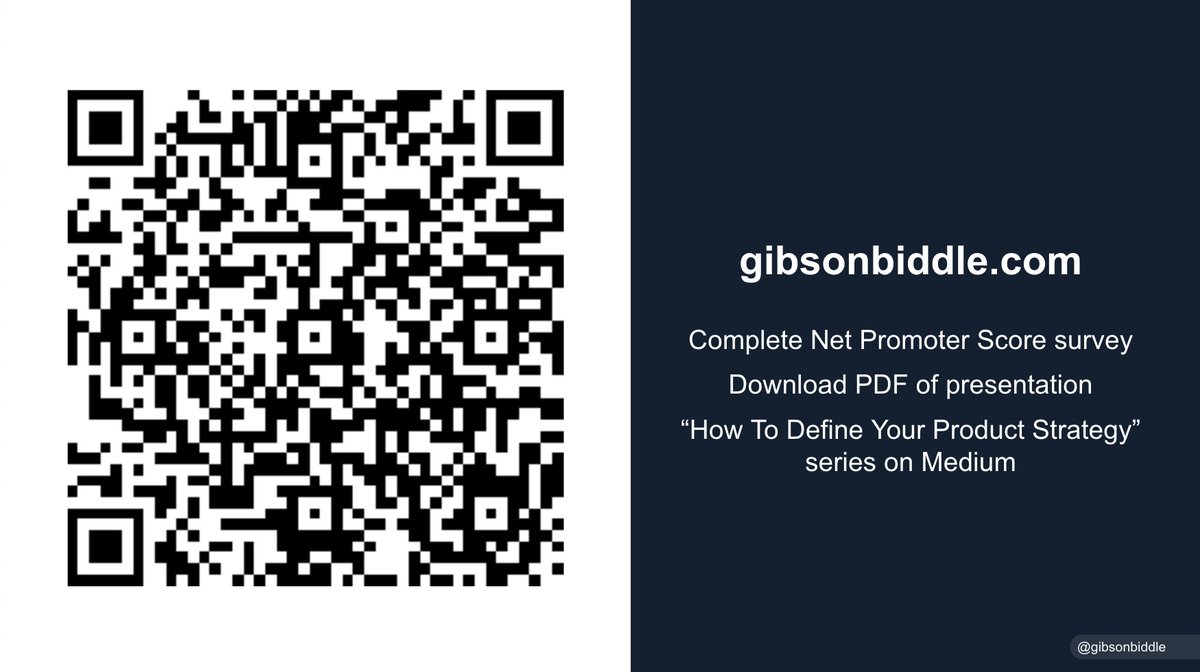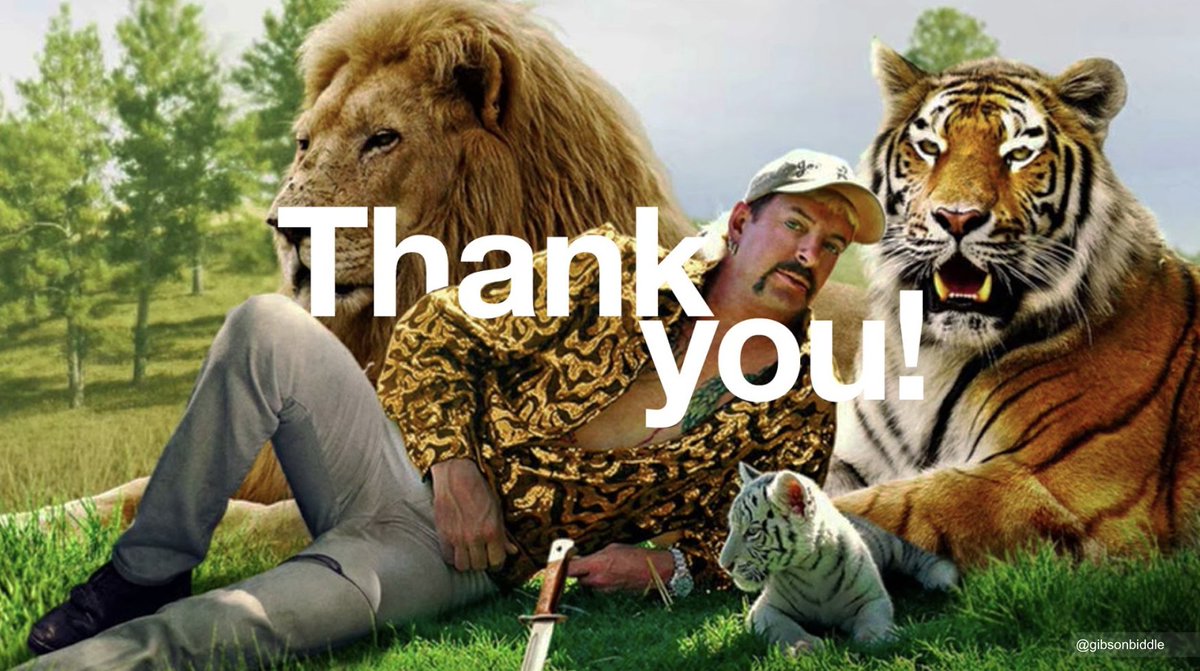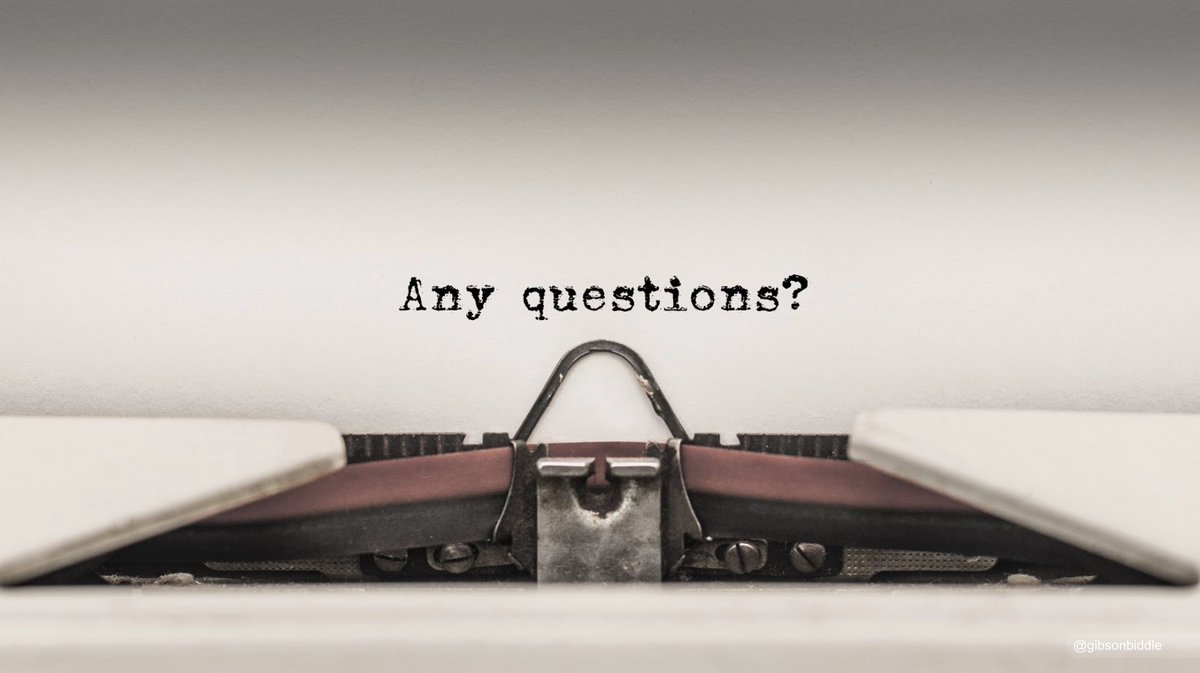1) I am often asked how I collect so much survey data for my talks. It has taken me a few years to figure it out, but it& #39;s a combination of making it easy for the audience, the right timing, and asking earnestly. Here are the steps...
2) At the end of my talk, I have a final closing slide -- something climactic that signals I am almost done...
3) Then I have a "Thank You" slide. This is a signal that I am done. The slide gives the audience the license to clap...
4) I let folks clap for a bit, but then ask them to stop, and signal that I have just one more thing...
5) That& #39;s when I tell the audience that sometimes I feel like I am a street performer, doing my best to breathe fire...
6) Then I tell them that this is the awkward moment when I pass my hat. But I am not asking for money, I am asking for feedback...
7) I ask folks to pull out their phone and use their camera app, as though they are taking a picture. I let them know that a link will magically pop up, and they should click on it. It& #39;s a SurveyMonkey survey where zero means the talk sucks and ten is great. Choose any number.
8) I ask folks for one thing they like about the talk and one thing that I could do better. You can try the QR code to see the specific language and how I format the survey to work well on both phones and PC. Here& #39;s the link if you are on your phone: https://bit.ly/35dCqsF ">https://bit.ly/35dCqsF&q...
9) I express my appreciation for the feedback and communicate how helpful it is to me. I share this next slide with a link to my site where I provide a link to the survey, PDF, and reading. This is for a subset of phones where the QR code does not work: https://www.surveymonkey.com/r/HowToCollectFBtweet">https://www.surveymonkey.com/r/HowToCo...
12) In a virtual talk, I have the organizer drop appropriate links into the chat as I present my QR code. Look for the links at the top of my site to see examples of stuff I provide for the audience: http://gibsonbiddle.com"> http://gibsonbiddle.com .
13) Why it works: 1) I make it easy 2) I ask for feedback at the right time 3) I communicate how important the feedback is to me.
14) I get a response rate of 10 to 50%. Smaller talks (<100) have the highest response rate and big talks can drop to 30% while recordings using this tactic get about a 10% rate.
13) I now have 595 discrete survey results and each survey has been incredibly helpful to me. One survey for a recording of "Branding for Builders" ( https://vimeo.com/371063492 )">https://vimeo.com/371063492... has more than 4,000 survey results. You can see the survey results here: https://www.surveymonkey.com/results/SM-KTL9B6MQ7/">https://www.surveymonkey.com/results/S...
14) Why doesn& #39;t everyone do this? Getting survey feedback for every talk is scary. Most folks say they want feedback, but will rush through the "ask" or rely on the organizer to collect the data. (Organizers ask hours later & response rate drops to <10%). You need thick skin.
15) Many debate the value of Net Promoter Score data but I haven& #39;t found a better proxy. Again, folks don& #39;t ask for feedback because they haven& #39;t found a way to execute it or they& #39;re afraid of feedback. I& #39;ve done my best to explain how to get the data. Work through the fear.
16) I have a subscription for SurveyMonkey which gives me unlimited surveys and automatically generates a QR code. You can try another tool but I think of my investment in SurveyMonkey as an investment in myself. It is worth it.
17) Most common mistakes in implementing this tactic: 1) Rushing through the "ask." Give it time. Let the audience know how important the feedback is to you. 2) Failure to explain the mechanics of how to use the QR code. 3) Asking for feedback after Q & A. (Don& #39;t do this.)
18) Copy this exact approach -- it& #39;s a nice form of flattery and a signal that I have been helpful. In the vein of "Good artists copy, great artists steal," I& #39;d love to see you enhancements on this approach, too. Good luck! More here: http://gibsonbiddle.com"> http://gibsonbiddle.com
19) Warning: You will get your ass kicked at first. NPS is a brutal scale, so expect zero on your first result. 50 is considered good/very good and 70 is considered world-class. Above 80 is "dance on rooftops."

 Read on Twitter
Read on Twitter